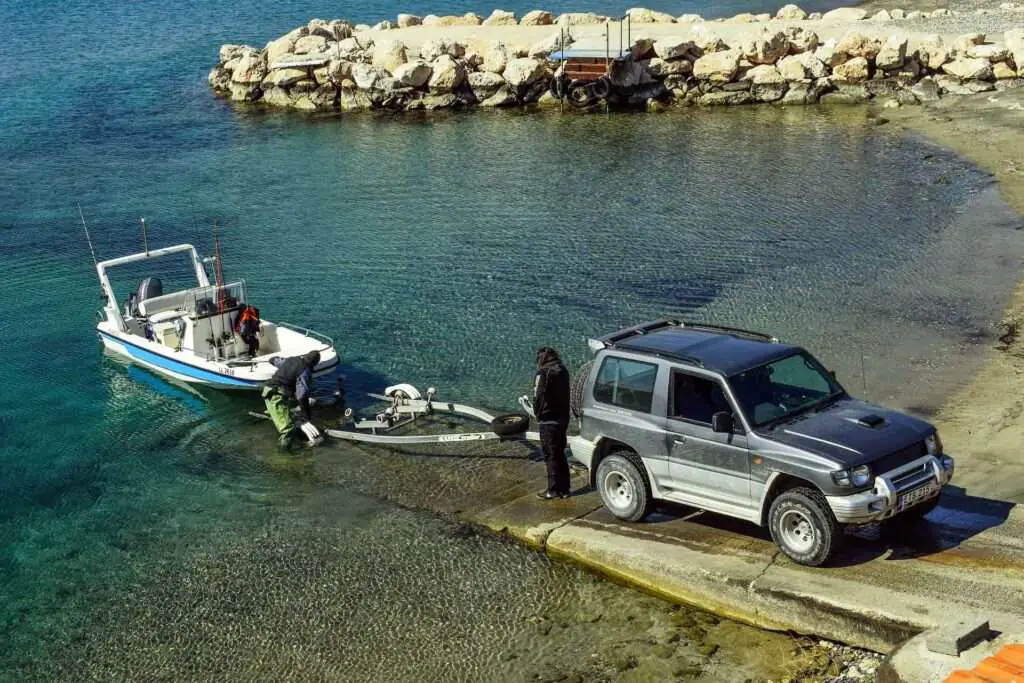
Boat trailer brake problems are common and can cause all sorts of headaches. This blog post will discuss the five most common boat trailer brake problems, and how to fix them.
Damaged or missing parts
It’s crucial to regularly inspect your brakes to identify any parts that need to be replaced or repaired. Some of the most common parts that may become damaged or missing include brake pads, brake drums, and brake shoes.
If you notice any unusual noise, vibration, or reduced braking power, it’s possible that a damaged or missing part is the culprit. In this case, you should immediately take your boat trailer to a professional mechanic or repair shop to get the problem diagnosed and fixed.
Replacing damaged parts is relatively straightforward and can usually be completed quickly and inexpensively. Always make sure that the replacement parts you purchase are designed specifically for your trailer model and brand, to ensure proper fit and performance.
Here is a good video to show you how to replace backing plate, Cyl, Pads and bleed system
Air in the lines
One of the most common brake problems in boat trailers is air in the brake lines. Air can enter the brake lines when the brake fluid is low, or if there is a leak in the system. When air is present, it can cause a spongy brake pedal or even brake failure.
To fix this issue, start by checking the brake fluid level and topping it off if necessary. Next, bleed the brake system to remove any air from the lines. This involves opening the bleeder valve on each wheel and letting the brake fluid flow until it’s free of air bubbles.
Incorrectly adjusted brakes
Improperly adjusted brakes means that the brakes are not engaging enough when you press the pedal, or that they are engaging too much, causing the trailer to lock up.
To fix this issue, you’ll need to adjust the brakes. Begin by parking the trailer on a level surface and chocking the wheels to prevent the trailer from rolling. Next, remove the brake drum from each wheel to access the brake adjuster. The adjuster is a star-shaped wheel that controls the distance between the brake pads and the drum.
Using a brake adjustment tool, turn the adjuster clockwise to tighten the brake pads against the drum. You want to tighten the brakes until you feel some resistance when turning the wheel by hand, but not so much that the wheel cannot spin at all.
It’s important to adjust both sides of the axle equally to ensure even braking. Repeat this process for each wheel until the brakes are properly adjusted.
Brakes lock up
brakes lock up can be caused by a few different factors. One of the most common culprits is worn-down brake pads or shoes. When the brake pads are too thin, they can overheat and cause the brakes to lock up.
Another potential cause is a damaged or worn brake drum. If the brake drum is damaged or worn out, it can cause the brakes to grab and lock up. In addition, an incorrectly adjusted brake system can also lead to the brakes locking up. If the brake shoes are adjusted too tight, they can grab onto the drum and cause the brakes to lock up.
To fix this problem, start by inspecting the brake pads and shoes for any signs of wear. If they appear to be worn down, it’s time to replace them. You should also inspect the brake drums to ensure they’re in good condition. If they’re damaged or worn out, they’ll need to be replaced as well.
If your brake system appears to be in good condition, the problem may be caused by an air bubble in the brake lines. This can occur when the brake lines aren’t properly bled after being serviced. To fix this, you’ll need to bleed the brake system until all of the air is removed.
Here is a quick video to show you how to fix locking up brakes
Corroded or rusted components
The marine environment is tough on trailers and the salt water can take a toll on your boat trailer brake components. Rust and corrosion can quickly build up on brake parts, causing them to deteriorate over time and reducing their effectiveness.
One way to combat this problem is by using stainless steel or galvanized brake parts that resist corrosion. Additionally, you should inspect your brake components regularly for signs of rust and corrosion.
If you do find rust or corrosion on your brake parts, you should clean them off and apply a rust inhibitor. Be sure to replace any severely rusted or corroded parts, as they will not be able to function properly and could put your safety at risk.
Here is a good video on how to remove a STUCK drum brake, It do takes time sometimes
